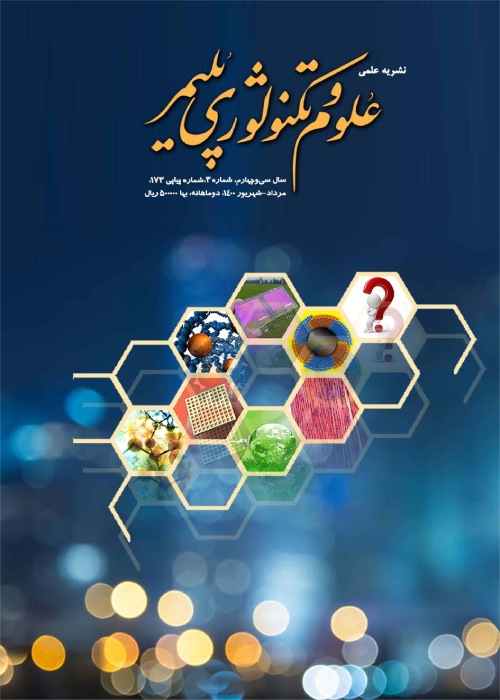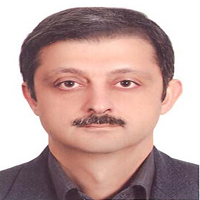Numerical Simulation and Visual Evaluation of the Mixing of Polymer Fluids in Twin Screw Extruder Based on Components Miscibility
Author(s):
Article Type:
Research/Original Article (دارای رتبه معتبر)
Abstract:
Hypothesis
The morphological attributes of polymer blends have a significant influence on the final properties of the blend. Many attempts have been made to simulate morphological changes of a blend in various equipments, using several mathematical models and numerical simulations. In this study, mixing of non-Newtonian fluids was simulated using a power-law rheological model in a typical twin screw extruder in three dimensions. Modified marker and cell (MAC) method was used for simulation. In modified MAC, for simulation of polymeric fluids flow, power law rheological model was used to generalize velocity equations to non-Newtonian fluids. Interfacial tension and viscosity ratios were used to introduce the effect of miscibility parameter.
Methods
In this method, momentum equations were solved and discredited using finite volume method. The linear algebraic equations were solved using three diagonal matrix and the coefficients of network’s points were obtained. Then, velocity values were obtained for any control volume in three dimensions by introducing typical rheological and interfacial tension parameters for a pair of polymers. The under relaxation factors (URFs) were used for velocities in three dimensions and pressure for faster convergence. Then, new spatial peculiarities of particles of two phases were traced by taking appropriate time intervals. The geometry of screws in twin screw extruder was achieved using hypothesis of imaginary domain of screws tips.
Findings
A twin screw extruder with glass barrel was designed and constructed for intuitive investigation of mixing development. Mixing of polymer pairs of different miscibility was performed in equal time intervals. The experimental pictures were compared with the simulation results. A very good agreement was observed between the results of numerical simulation and experimental images in both miscible and immiscible fluids. The determined separation areas for theoretical and experimental images also confirmed the accuracy of the simulation. Therefore, modified marker and cell (MAC) method could be used to simulate the mixing of polymer blends in twin screw extruder, as the most common blending equipment.Keywords:
Language:
Persian
Published:
Iranian Journal of Polymer Science and Technology, Volume:32 Issue: 1, 2019
Pages:
55 to 64
magiran.com/p1992408
دانلود و مطالعه متن این مقاله با یکی از روشهای زیر امکان پذیر است:
اشتراک شخصی
با عضویت و پرداخت آنلاین حق اشتراک یکساله به مبلغ 1,390,000ريال میتوانید 70 عنوان مطلب دانلود کنید!
اشتراک سازمانی
به کتابخانه دانشگاه یا محل کار خود پیشنهاد کنید تا اشتراک سازمانی این پایگاه را برای دسترسی نامحدود همه کاربران به متن مطالب تهیه نمایند!
توجه!
- حق عضویت دریافتی صرف حمایت از نشریات عضو و نگهداری، تکمیل و توسعه مگیران میشود.
- پرداخت حق اشتراک و دانلود مقالات اجازه بازنشر آن در سایر رسانههای چاپی و دیجیتال را به کاربر نمیدهد.
In order to view content subscription is required
Personal subscription
Subscribe magiran.com for 70 € euros via PayPal and download 70 articles during a year.
Organization subscription
Please contact us to subscribe your university or library for unlimited access!



